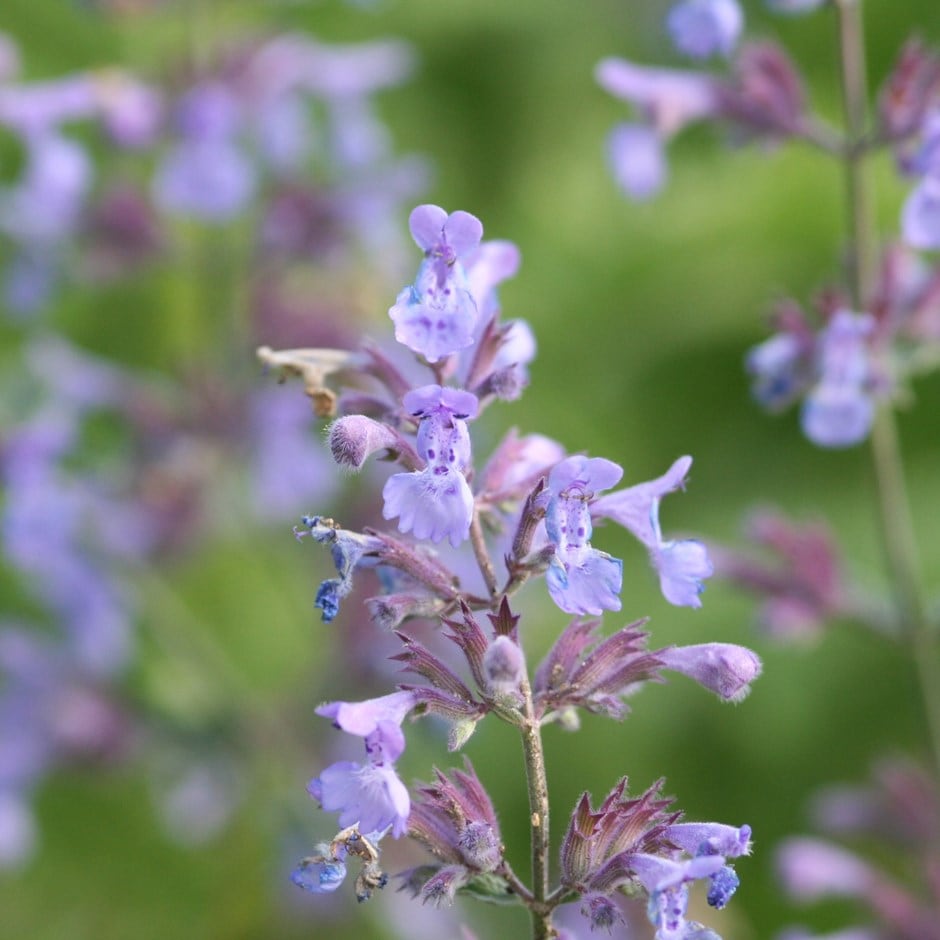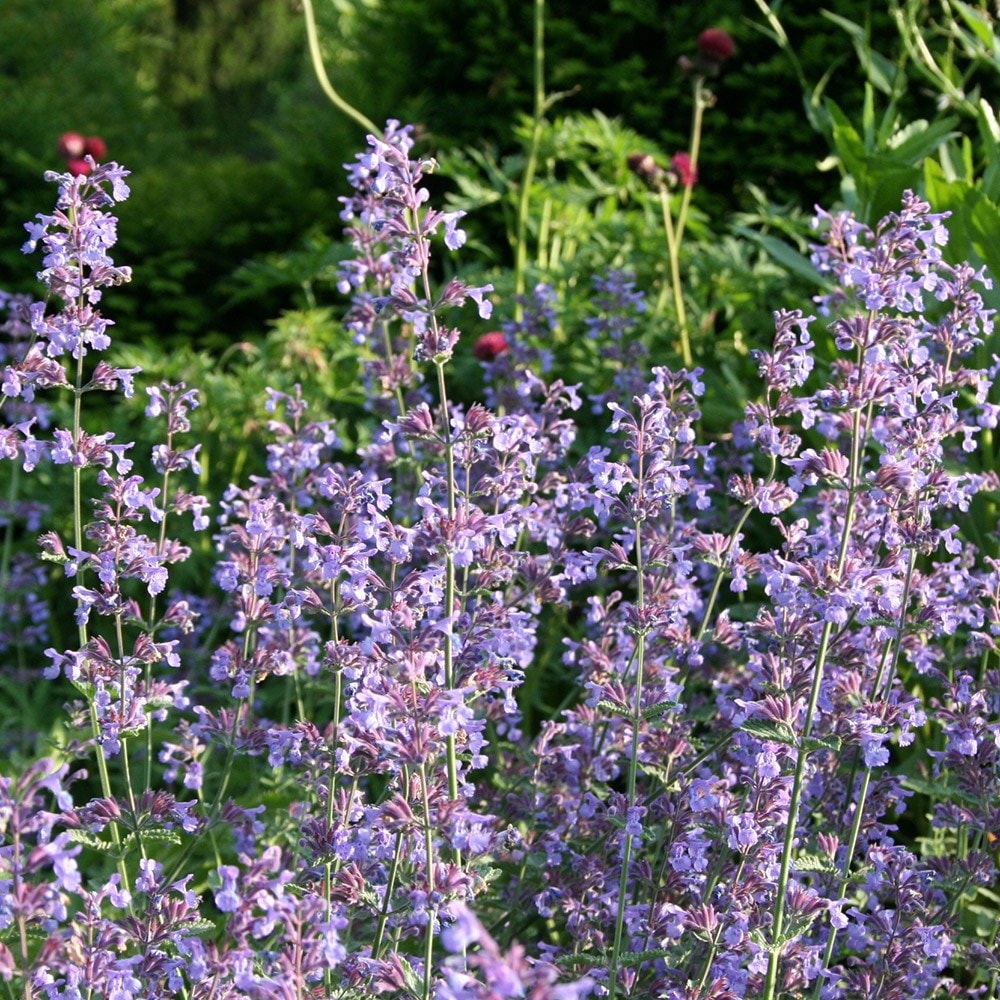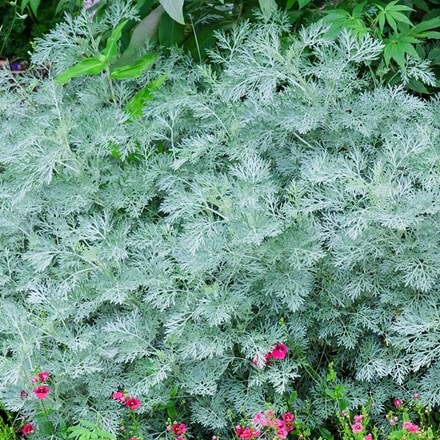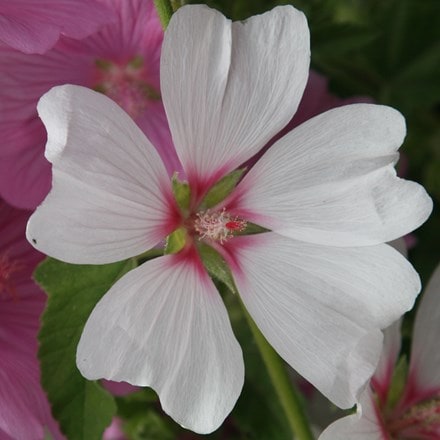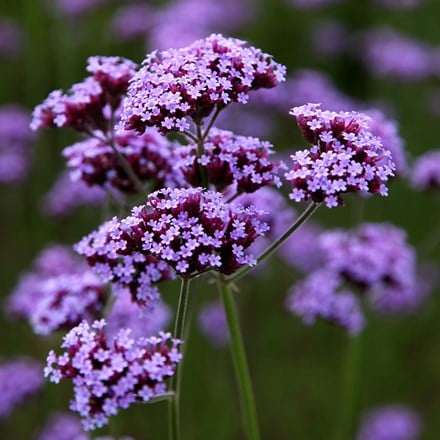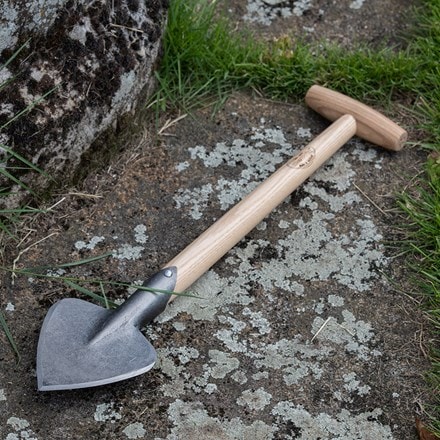Nepeta × faassenii
catmint
- 9cm pot
- £8.99
- In stock (shipped within 2-3 working days)
- 3 × 9cm pots
- £19.99 £6.66 each
- In stock (shipped within 2-3 working days)
- 6 × 9cm pots
- £34.99 £5.83 each
- In stock (shipped within 2-3 working days)
- 2 litre pot
- £17.99
- In stock (shipped within 2-3 working days)
- 3 × 2 litre pots
- £44.99 £15.00 each
- In stock (shipped within 2-3 working days)
Delivery options
- Standard £5.99
- Position: full sun or partial shade
- Soil: moderately fertile, moist, well-drained soil, or general purpose potting compost for containers
- Rate of growth: average
- Flowering period: June to September
- Hardiness: fully hardy
A dwarf catmint with slender spikes of lavender-blue summer flowers and aromatic, sage-green leaves. This clump-forming perennial will form open drifts of hazy blue flowers for weeks over the summer months, and makes a lovely informal edging plant for paths and borders.
When it's trodden underfoot the cascading foliage releases an intoxicating aroma. Fresh or dried, the leaves make a refreshing and therapeutic tea which is high in Vitamin C and has traditionally been used to treat such conditions as nervousness, insomnia, hyperactivity, colds and fevers.
The flowers of Nepeta × faassenii are highly attractive to bees, and of course, the foliage to cats, who will go mad for it. To prevent cats from flattening the plant, insert several twiggy sticks into the centre.
When it's trodden underfoot the cascading foliage releases an intoxicating aroma. Fresh or dried, the leaves make a refreshing and therapeutic tea which is high in Vitamin C and has traditionally been used to treat such conditions as nervousness, insomnia, hyperactivity, colds and fevers.
The flowers of Nepeta × faassenii are highly attractive to bees, and of course, the foliage to cats, who will go mad for it. To prevent cats from flattening the plant, insert several twiggy sticks into the centre.
Garden care:
Nepeta thrives in sunny, well-drained locations with slightly alkaline soil and should be planted with plenty of well-rotted organic matter into the backfill and immediate area.
To encourage a second flush of blooms, prune it by one-third after the first flowering and cut back heavily in late winter to maintain its shape. Regular deadheading will promote continuous flowering, and once established, water deeply but infrequently, to assist in developing drought-tolerance.
Apply a light mulch around the base annually and avoid over-fertilising to prevent floppy growth. Divide the plant every 3-4 years to maintain its vigour. Good air circulation is important to prevent fungal (mildew) issues so space plants accordingly - we recommend a spacing of 30cm (12in) between 9cm plants, and 45cm (18in) between 2 litre plants.
To encourage a second flush of blooms, prune it by one-third after the first flowering and cut back heavily in late winter to maintain its shape. Regular deadheading will promote continuous flowering, and once established, water deeply but infrequently, to assist in developing drought-tolerance.
Apply a light mulch around the base annually and avoid over-fertilising to prevent floppy growth. Divide the plant every 3-4 years to maintain its vigour. Good air circulation is important to prevent fungal (mildew) issues so space plants accordingly - we recommend a spacing of 30cm (12in) between 9cm plants, and 45cm (18in) between 2 litre plants.
